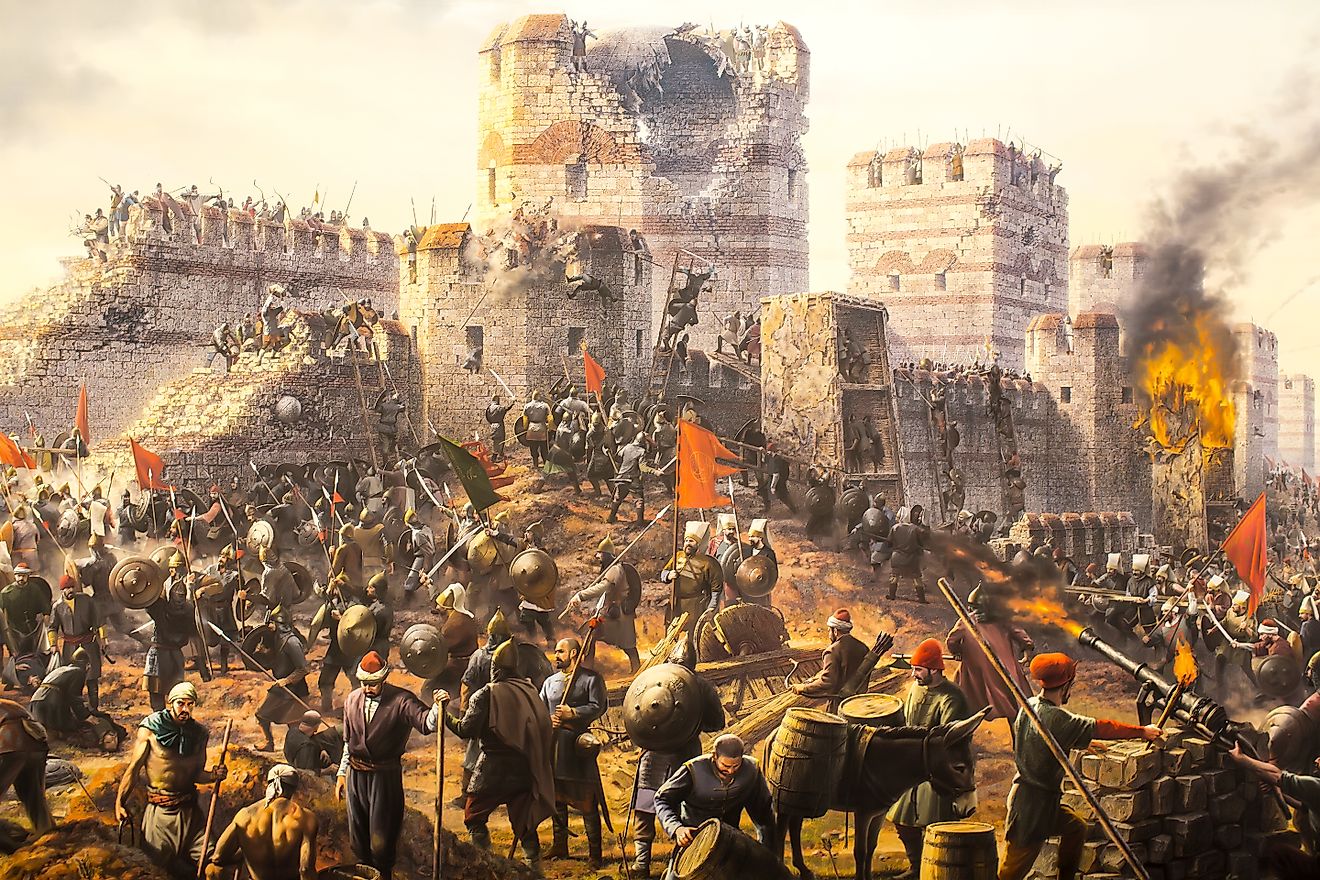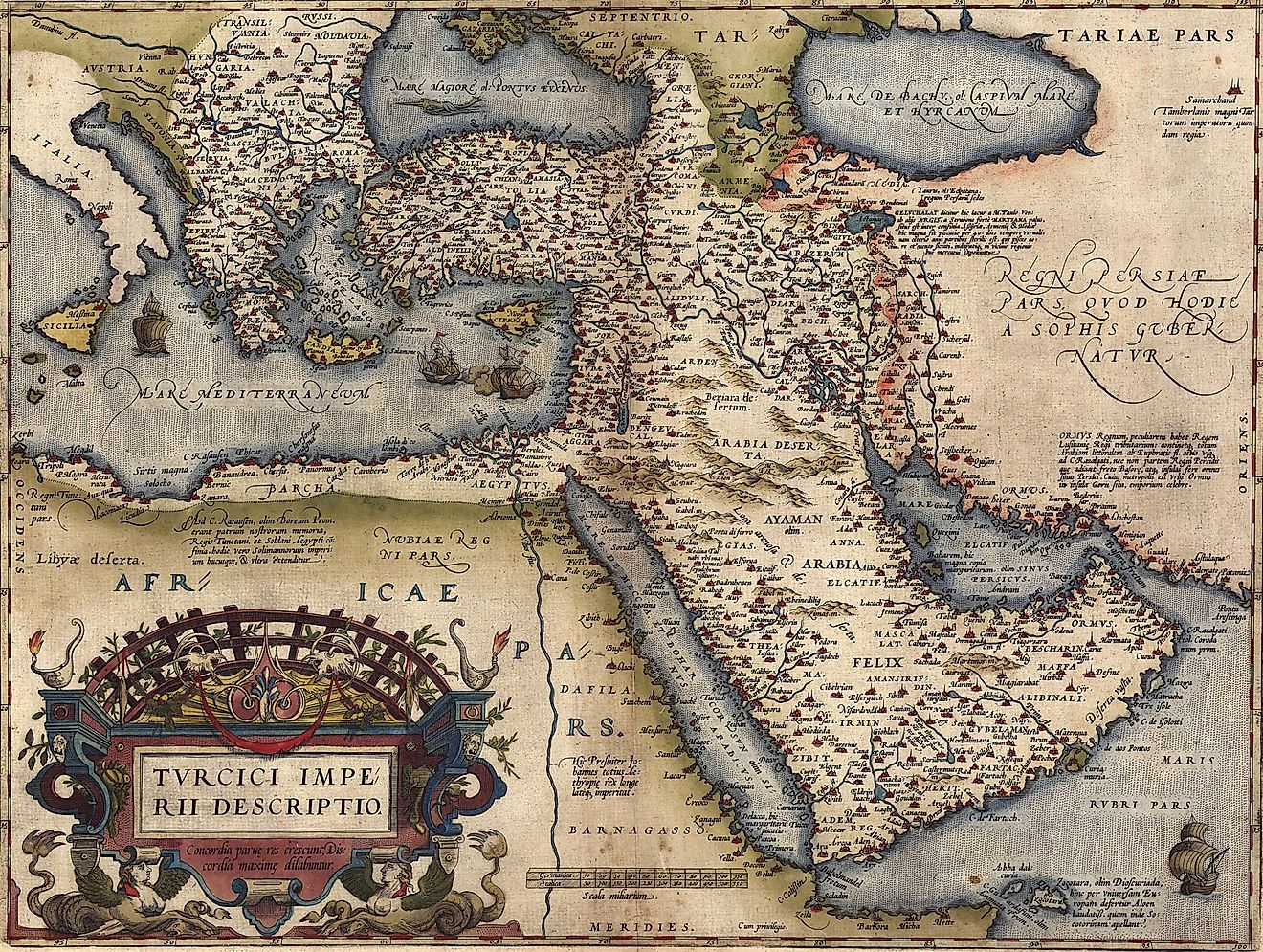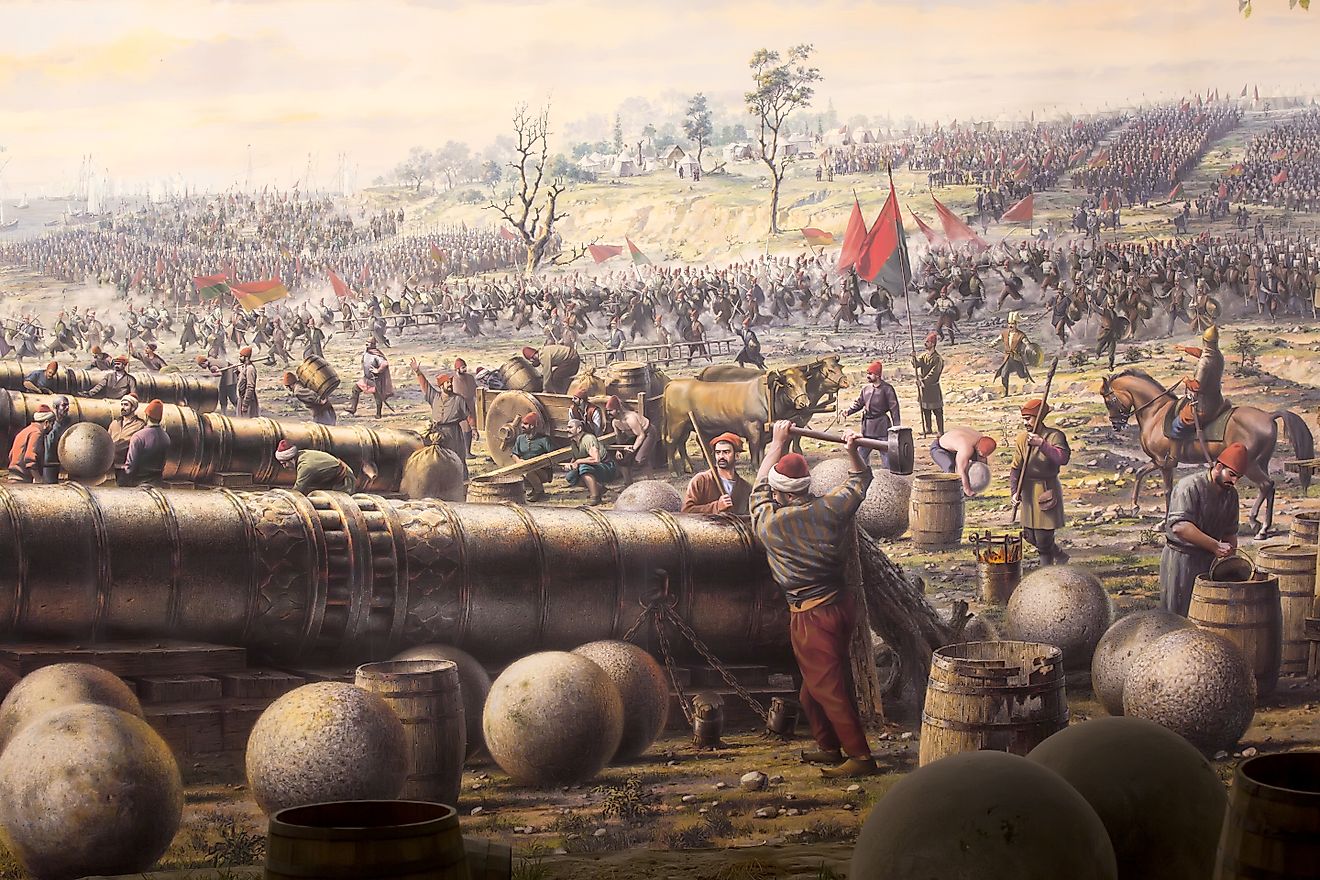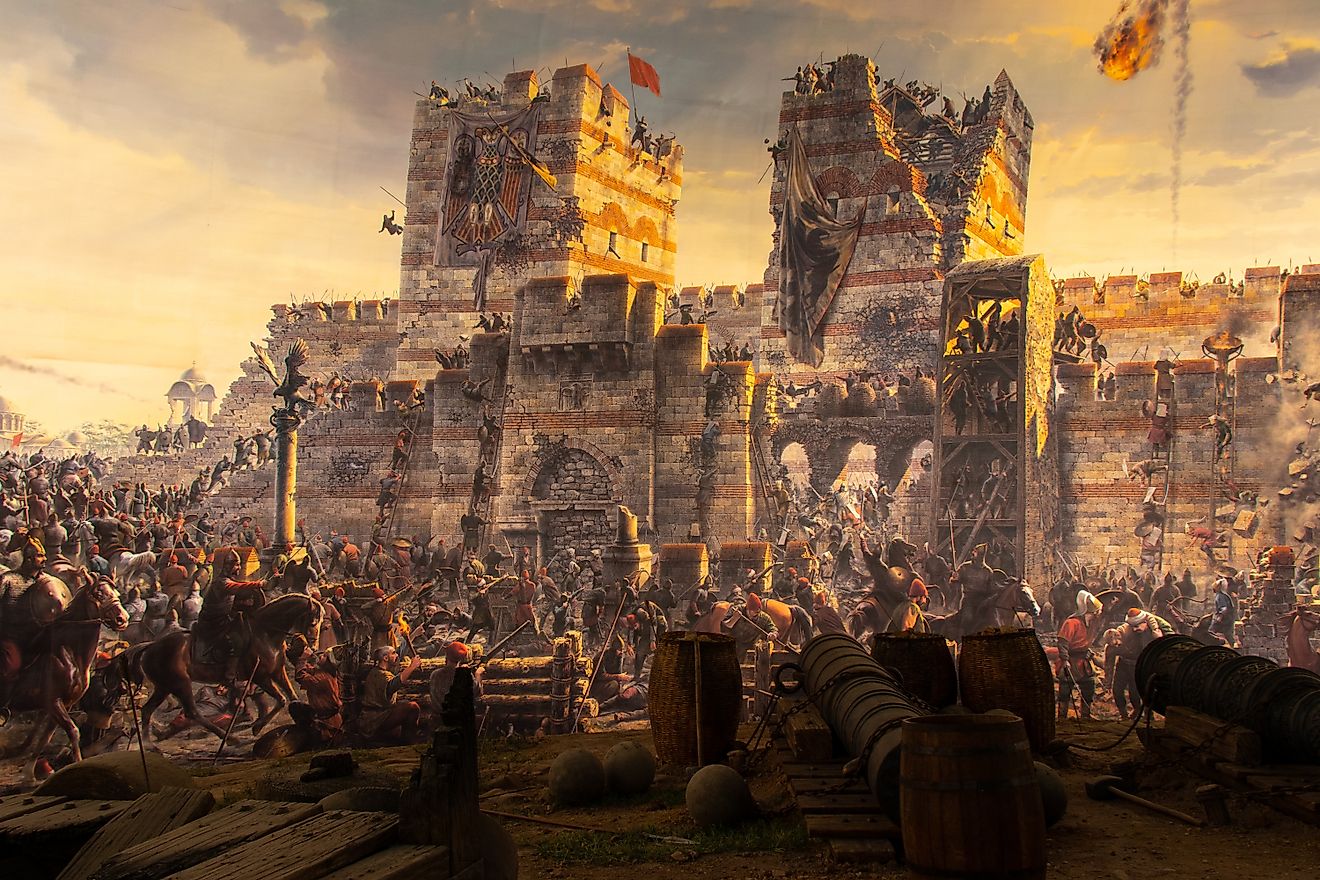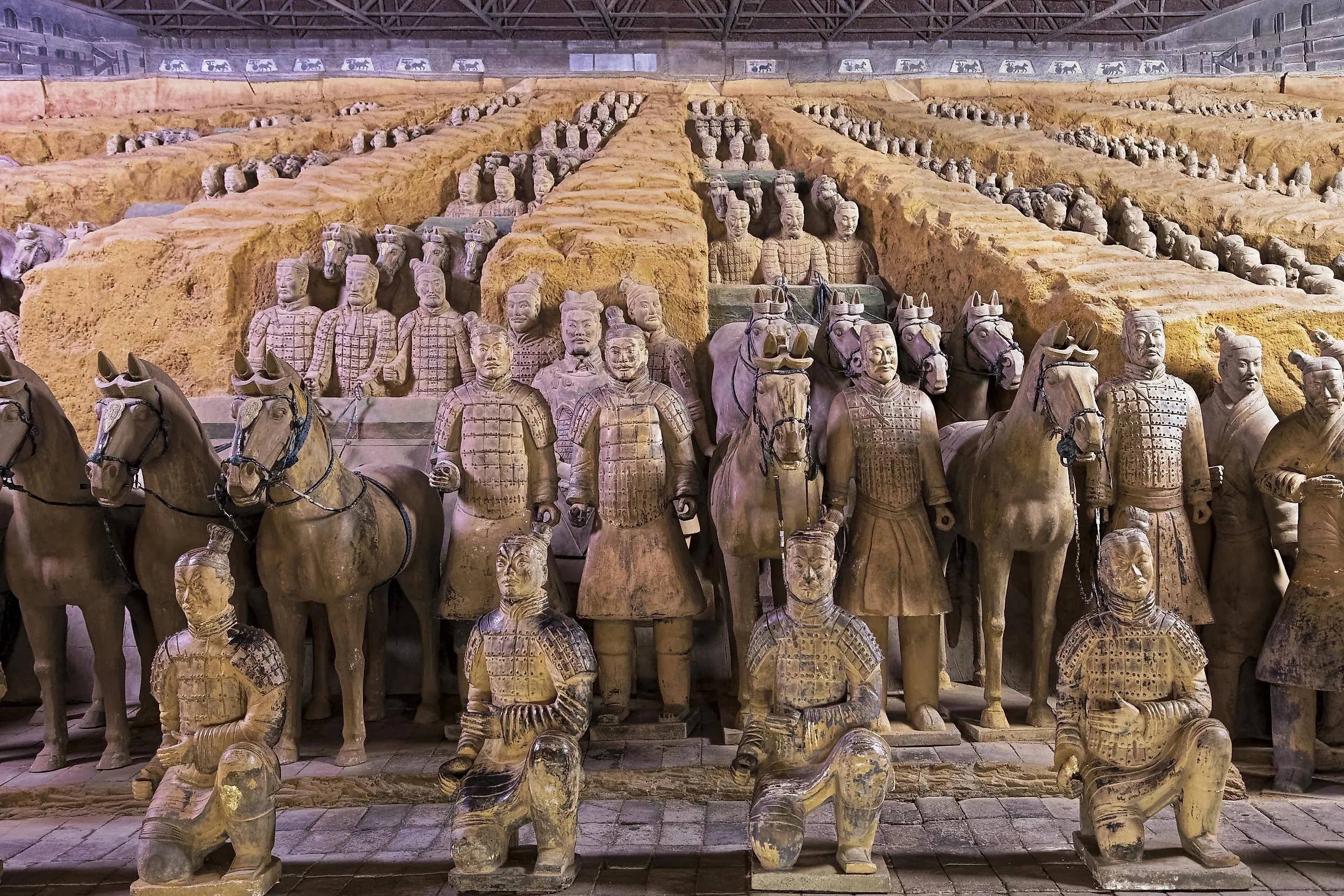
8 Ancient Artifacts That Rewrote History Books
There are countless ancient artifacts that have reshaped the understanding of humanity’s past, altering long-held beliefs and redefining historical narratives. From mysterious relics and groundbreaking discoveries to insights into early cultures, these objects reveal the ingenuity and ambition of civilizations long before 500 AD. Among them are the life-sized warriors of China’s Terracotta Army, crafted over two thousand years ago, and the vast desert-carved Nazca Lines in Peru, whose scale can only be appreciated from above. Each example offers enduring clues about the people who created them and the worlds they inhabited.
Nazca Lines
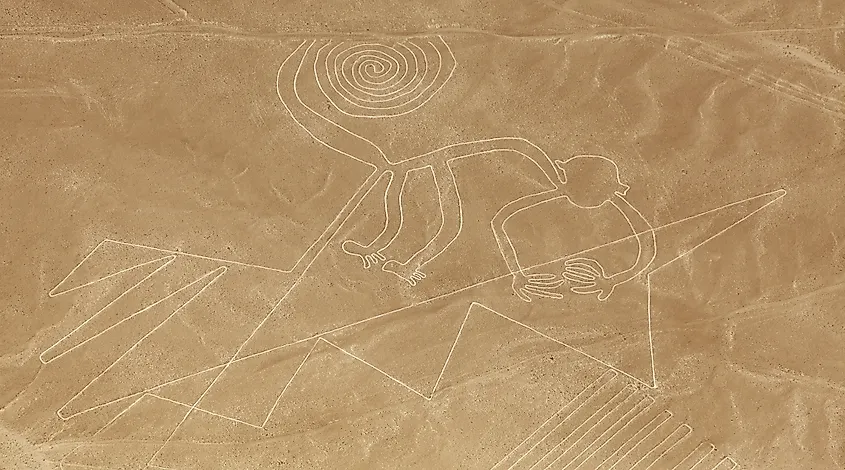
The Nazca Lines in Peru are a series of geoglyphs, or line-based geometric shapes, drawn out across the Nazca Desert. Comprised of over 800 straight lines and other notable artistic features, the Nazca Lines were brought to life between 200 BCE and 500 CE. With its mysterious etchings and questions about how they came to be, historians always find something new to think about when considering ancient Peruvian art and ideas about agriculture or astronomy.
Those who studied or researched its geometrical foundations believe that the Peruvians of that period were able to formulate mathematical concepts and archaeological strengths without the use of modern tools, making them stand out as an innovative civilization. The discovery of the Nazca Lines also proved that it was advanced by promoting massive or well-established creations that many could not have formed without lots of technology or materials. Because the landmark was designed with an aerial perspective, it reshaped or challenged the understanding of ancient South American tribal capabilities and how the Peruvians knew about early geometry and land surveying techniques; astronomical and symbolic heritage made these isolated tribes smarter and more developed than we originally thought.
Chinese Terracotta Army
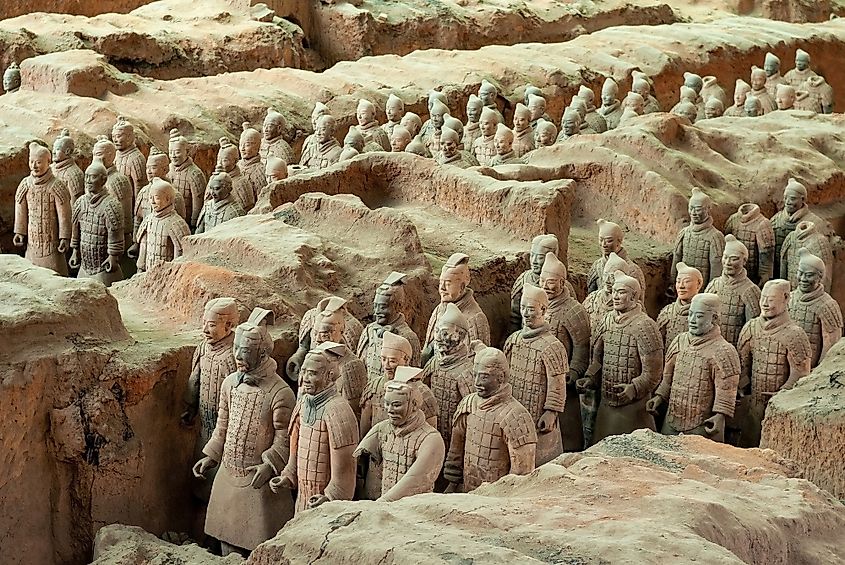
The Chinese Terracotta Army, first constructed around 246 BCE in ancient China, is an ancient mausoleum housing Qin Shi Huang and over 8,000 soldiers, chariot figures, and horses that have survived many years since their origins. It was later discovered in the 1970s, and those who observed its foundation and legacy saw that the burial complex is a marvel and a spectacular feat that continues to baffle the mind. Archaeologists estimate the site covers roughly 21-22 square miles, with each warrior standing about 5 feet 11 inches to 6 feet 7 inches tall, no two with the same facial features.
What makes this artifact important to history and the rewriting of it is its emphasis on labor forces and mass production. Military prowess and complex artistry demonstrated that the Qin Dynasty was quite clever and familiar with advanced industrial production efforts, which historians knew so little about from that time. Such practitioners also did not fully realize the scale of imperial authority and the unique methods employed by the ancient Chinese, especially in warfare and the pursuit of immortality, which required significant time and resources. The idea of making a whole clay army out of funerary practices encouraged and reformed scholarly thinking about how extraordinary ancient Chinese civilizations were in the realm of afterlife preparation.
Rosetta Stone
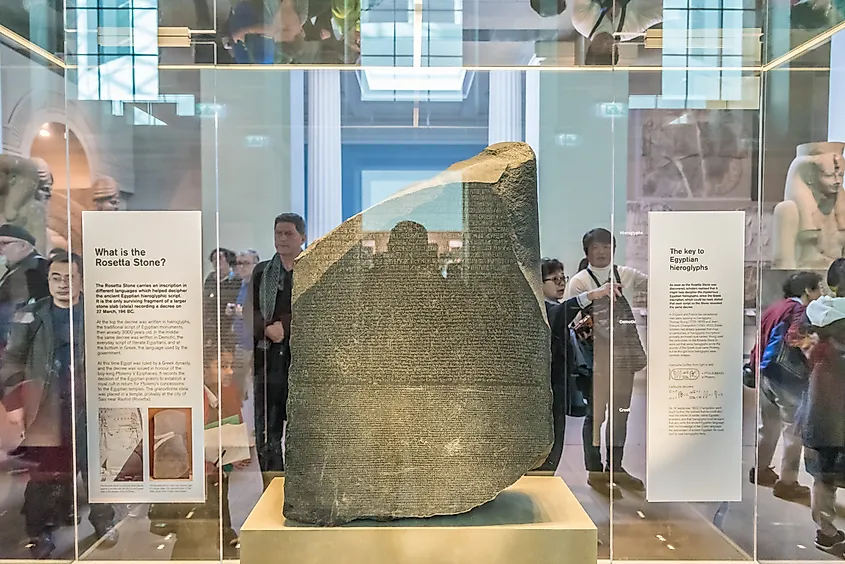
The Rosetta Stone is an ancient granodiorite slab with a written decree on it that was issued in 196 BCE during the Ptolemaic dynasty. Discovered in the 1790s by French soldiers, the artifact became a legendary relic for its importance as a three-way scripture featuring text in hieroglyphics, Greek language, and ancient Demotic vocabulary. Currently, it is housed in the British Museum, but it has remnants tracing back to when the Egyptians used these artifacts as a propaganda tool to help support King Ptolemy V Epiphanes.
With multiple purposes theorized, the artifact is one of the most interesting contributions to history because of its emphasis on tradition and symbolism. With the existence of the Rosetta Stone today, historians now know how to translate or interpret beliefs about ancient Egypt. In addition, the Rosetta Stone was a crucial factor in rebuilding knowledge, as it made it easier for epigraphers to recognize newly found hieroglyphic texts hidden within papyrus and other historical documents, thus allowing for phonetics to become a modern breakthrough. This artifact has essentially made scientific archaeology more efficient in recent times.
Baghdad Battery
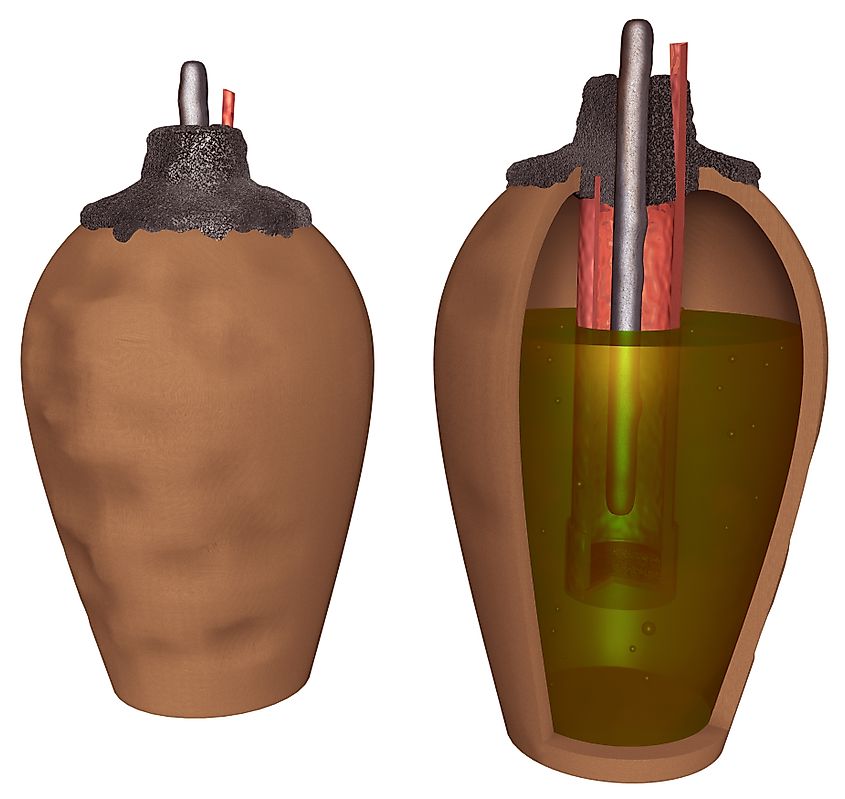
A famous artifact, the Baghdad Battery, has been a controversial object in human history. Dating as far back as 150 BC to 250 AD and discovered in modern Baghdad in the 1930s, the clay jar is thought to have originated in Mesopotamia during the Parthian period for reasons still unknown. It consists of a ceramic vessel containing a copper cylinder, an iron rod, and bitumen sealant, features that have prompted a reevaluation of how ancient people may have understood electrochemical principles.
Several theories have been proposed about its purpose. Some suggest it served as a medical device for pain relief, while others believe it functioned as an early galvanic cell, possibly using acidic liquids such as vinegar or lemon juice as an electrolyte. The object's ingenuity, resembling a primitive battery despite the absence of electrical wiring, raises questions about why such technology existed during what is generally considered an underdeveloped period. Overall, the artifact suggests that ancient civilizations may have experimented with electrical innovations long before modern times.
Dead Sea Scrolls
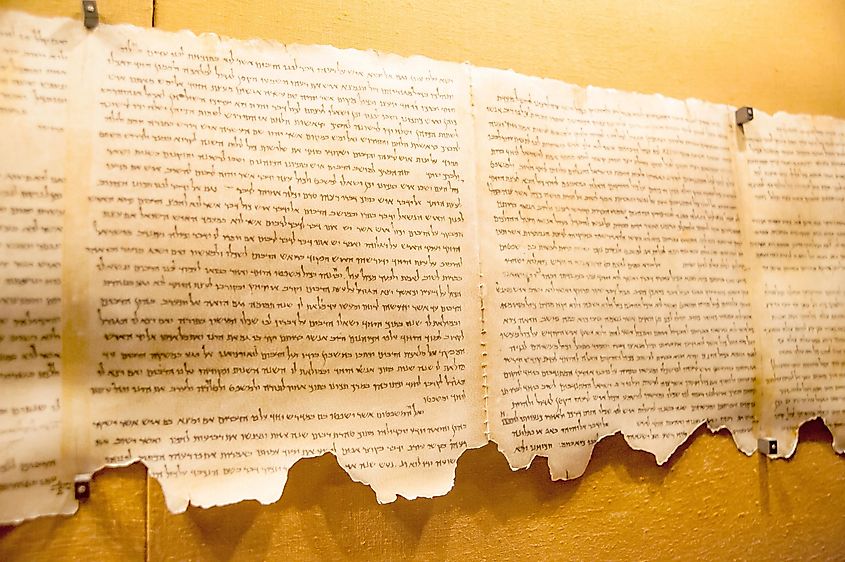
The Dead Sea Scrolls were monumental for rewriting history books. First reportedly mentioned in the timeline between 300 BCE and 100 AD in Israel, they included sectarian works and ancient Hebrew texts that have survived years of biblical analysis. That said, controversies about their origins and how they relate to Christianity and Judaism in various interpretations make these relics quite an insightful find.
While their discovery was famously known in the late 1940s by Bedouin herders, the scrolls have been subject to controversy based on their intended uses as a papyrus module. Over 900 fragments of history are laid out for debate, yet history proves that nobody knows who created the scrolls originally or for what underlying purpose. The most plausible theory is that the Essenes of Qumran created and used the scrolls until the Romans invaded. There are clues to hidden treasure listed within the Copper Scroll itself, leading to theories about where valuable gold or silver caches may be buried. These scrolls impacted Judaism and early Christian theory about scholarly readings and sectarian scripture.
Phaistos Disc
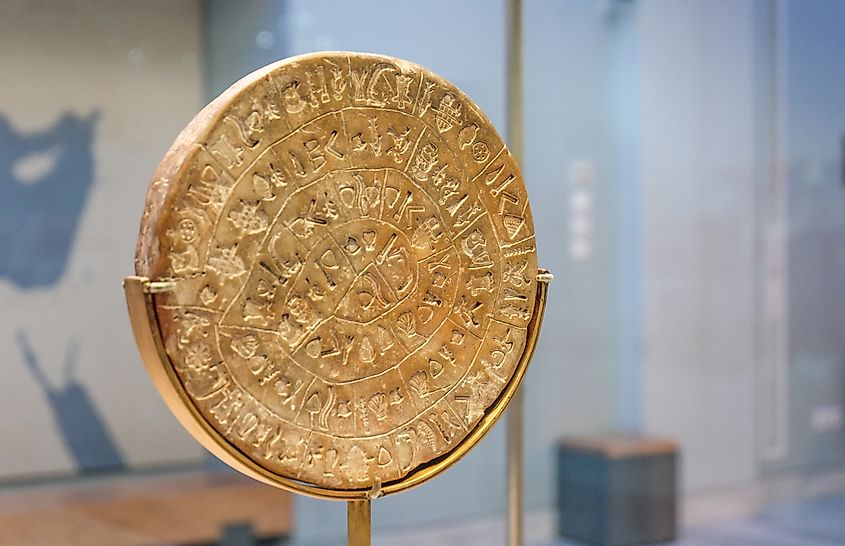
The Phaistos Disc, dating to roughly the Middle or Late Minoan Bronze Age (around 1850-1550 BCE), is one of the most intriguing artifacts from ancient Crete. Discovered in 1908 by Italian archaeologist Luigi Pernier in the Minoan palace of Phaistos, the fired clay disc is impressed on both sides with a spiral of over 200 stamped symbols. These images, arranged from the outer edge inward, are unlike any other writing system from the ancient world.
Its purpose remains a mystery, with theories ranging from a ceremonial prayer or ritual text to a form of record-keeping. The disc’s individually stamped symbols have led some scholars to speculate that it may represent an early form of movable type, showcasing advanced craftsmanship long before the rise of Classical Greece. Because the language has never been conclusively identified, the Phaistos Disc continues to puzzle historians, encouraging new interpretations of how writing and symbolism developed in ancient Minoan culture.
Olmec Colossal Heads

The Olmec Colossal Heads are a series of rocky basalt structures shaped in the form of giant heads in ancient Mesoamerica. Tracing back to around 1200 BCE to 400 BCE, the Olmec heads are seen as both artistically and culturally significant. Weighing up to 50 tons, these gigantic creations were extraordinary to plain eyes. With unique head and facial features, the structures are a signal of debate among all who believe there is truth and fiction in many ways surrounding the artifact.
One of the main theories surrounding the heads is that they are representing rulers or warriors from ancient times who lived and served royalty. Others suggest that the heads are part of ancestral worship duties or were made to support ruling parties. The artifact has truly stirred controversy for being a phenomenon that encompasses archaeological mystery and complexity. In essence, the Olmecs were shown to be more advanced in their ways than previously thought, and in engineering terms, the aspect of structural planning proved quite inventive for the Olmecs. For those who learn history in school or research it professionally, the discovery of the Olmec heads proved that civilizations were already flourishing in unusual ways.
King Tutankhamun's Tomb
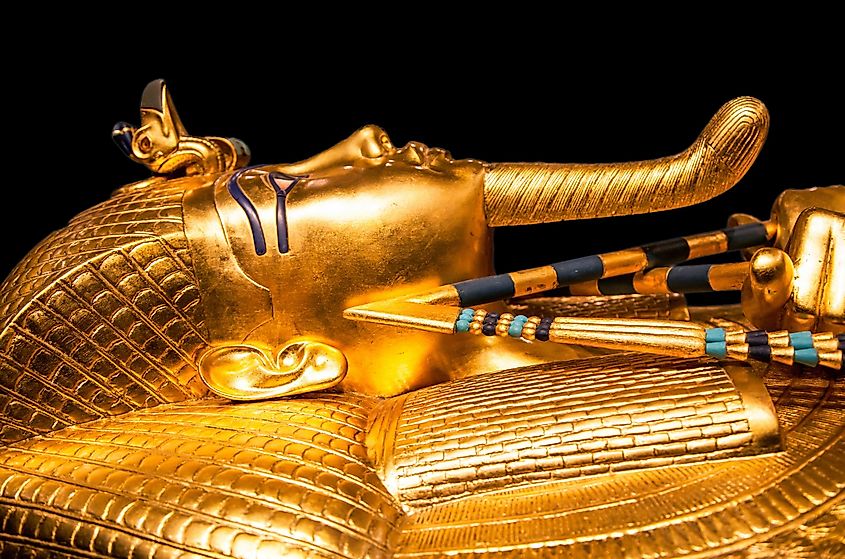
King Tutankhamun was a famed noble from ancient Egyptian times who was sealed away in a shiny golden chamber. The mausoleum, which was seen as a symbol and testament for ancient Egypt, has made historians and scholars curious about its foundations and purposes. After it was excavated and dug up in the 1920s, many started to wonder what made the tomb so vividly important, but its architectural and cinematic prowess made it a cultural legend today. The tomb contained more than 5,000 artifacts, including the iconic gold death mask weighing over 20 pounds, making it one of the richest archaeological finds in history.
King Tut's tomb, which dates back to the 1300s BCE, dramatically altered history books by presenting and even reintroducing concepts of craftsmanship and religion, which transformed one's lens on antiquated fashion and cinema. It also proved that myths, like the "Curse of the Pharaohs," could scare people based on simple archaeological excavations, creating controversy about older theories that relied on survivalism and simple artisanship. Modern takes on ancient Egypt were changed due to the newfound understanding of temples and obelisks, and archaeology as a whole was revolutionized thanks to this artifact, making it one of the biggest revelations of recent history. King Tut's final moments resulted in many rewritings on Egyptology and global phenomena about burial practices.
History Defined By These Artifacts
All of these ancient artifacts dictate how far historical perspectives have come. With so many ways to interpret or reinterpret the past, it is not hard to find a common theme or agenda related to artifact development and usage that helped transform civilizations and history books on paper. With each of these relics to talk about for a long time, it is no surprise that changes had to be made to reestablish the importance of ancient discoveries!
